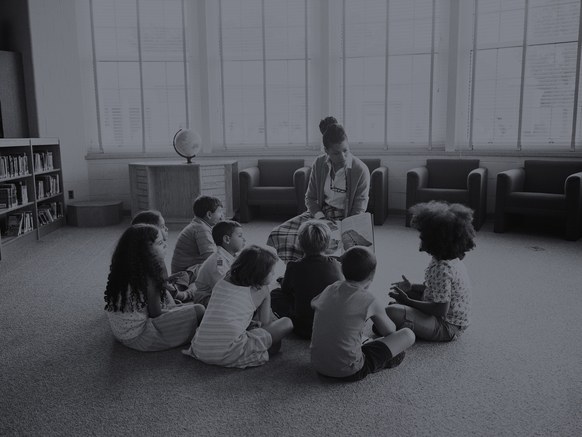Em: OI ITO IDEAS
Por: 09.06.1807:00 PM
URL: https://www.wired.com/story/tyranny-neurotypicals-unschooling-education/
STRUCTURED LEARNING DIDN’T serve me particularly well. I was kicked out of kindergarten for running away too many times, and I have the dubious distinction of having dropped out of two undergraduate programs and a doctoral business and administration program. I haven’t been tested, but have come to think of myself as “neuroatypical” in some way.
“Neurotypical” is a term used by the autism community to describe what society refers to as “normal.” According to the Centers for Disease Control, one in 59 children, and one in 34 boys, are on the autism spectrum—in other words, neuroatypical. That’s 3 percent of the male population. If you add ADHD—attention deficit hyperactivity disorder—and dyslexia, roughly one out of four people are not “neurotypicals.”
In NeuroTribes, Steve Silberman chronicles the history of such non-neurotypical conditions, including autism, which was described by the Viennese doctor Hans Asperger and Leo Kanner in Baltimore in the 1930s and 1940s. Asperger worked in Nazi-occupied Vienna, which was actively euthanizing institutionalized children, and he defined a broad spectrum of children who were socially awkward. Others had extraordinary abilities and a “fascination with rules, laws and schedules,” to use Silberman’s words. Leo Kanner, on the other hand, described children who were more disabled. Kanner’s suggestion that the condition was activated by bad parenting made autism a source of stigma for parents and led to decades of work attempting to “cure” autism rather than developing ways for families, the educational system, and society to adapt to it.
Our schools in particular have failed such neurodiverse students, in part because they’ve been designed to prepare our children for typical jobs in a mass-production-based white- and blue-collar environment created by the Industrial Revolution. Students acquire a standardized skillset and an obedient, organized, and reliable nature that served society well in the past—but not so much today. I suspect that the quarter of the population who are diagnosed as somehow non-neurotypical struggle with the structure and the method of modern education, and many others probably do as well.
I often say that education is what others do to you and learning is what you do for yourself. But I think that even the broad notion of education may be outdated, and we need a completely new approach to empower learning: We need to revamp our notion of “education” and shake loose the ordered and linear metrics of the society of the past, when we were focused on scale and the mass production of stuff. Accepting and respecting neurodiversity is the key to surviving the transformation driven by the internet and AI, which is shattering the Newtonian predictability of the past and replacing it with a Heisenbergian world of complexity and uncertainty.
In Life, Animated, Ron Suskind tells the story of his autistic son Owen, who lost his ability to speak around his third birthday. Owen had loved the Disney animated movies before his regression began, and a few years into his silence it became clear he’d memorized dozens of Disney classics in their entirety. He eventually developed an ability to communicate with his family by playing the role, and speaking in the voices, of the animated characters he so loved, and he learned to read by reading the film credits. Working with his family, Owen recently helped design a new kind of screen-sharing app, called Sidekicks, so other families can try the same technique.
Owen’s story tells us how autism can manifest in different ways and how, if caregivers can adapt rather than force kids to “be normal,” many autistic children survive and thrive. Our institutions, however, are poorly designed to deliver individualized, adaptive programs to educate such kids.
In addition to schools poorly designed for non-neurotypicals, our society traditionally has had scant tolerance or compassion for anyone lacking social skills or perceived as not “normal.” Temple Grandin, the animal welfare advocate who is herself somewhere on the spectrum, contends that Albert Einstein, Wolfgang Mozart, and Nikola Tesla would have been diagnosed on the “autistic spectrum” if they were alive today. She also believes that autism has long contributed to human development and that “without autism traits we might still be living in caves.” She is a prominent spokesperson for the neurodiversity movement, which argues that neurological differences must be respected in the same way that diversity of gender, ethnicity or sexual orientation is.
Despite challenges with some of the things that neurotypicals find easy, people with Asperger’s and other forms of autism often have unusual abilities. For example, the Israeli Defense Force’s Special Intelligence Unit 9900, which focuses on analyzing aerial and satellite imagery, is partially staffed with people on the autism spectrum who have a preternatural ability to spot patterns. I believe at least some of Silicon Valley’s phenomenal success is because its culture places little value on conventional social and corporate values that prize age-based experience and conformity that dominates most of society and most institutions on the East Coast. It celebrates nerdy, awkward youth and has turned their super-human, “abnormal” powers into a money-making machine that is the envy of the world. (This new culture is wonderfully inclusive from a neurodiversity perspective but white-dude centric and problematic from a gender and race perspective.)
This sort of pattern recognition and many other unusual traits associated with autism are extremely well suited for science and engineering, often enabling a super-human ability to write computer code, understand complex ideas and elegantly solve difficult mathematical problems.
Unfortunately, most schools struggle to integrate atypical learners, even though it’s increasingly clear that interest-driven learning, project-based learning, and undirected learning seem better suited for the greater diversity of neural types we now know exist.
Ben Draper, who runs the Macomber Center for Self Directed Learning, says that while the center is designed for all types of children, kids whose parents identify them as on the autism spectrum often thrive at the center when they’ve had difficulty in conventional schools. Ben is part of the so-called unschooling movement, which believes that not only should learning be self-directed, in fact we shouldn’t even focus on guiding learning. Children will learn in the process of pursuing their passions, the reasoning goes, and so we just need to get out of their way, providing support as needed.
Many, of course, argue that such an approach is much too unstructured and verges on irresponsibility. In retrospect, though, I feel I certainly would have thrived on “unschooling.” In a recent paper, Ben and my colleague Andre Uhl, who first introduced me to unschooling, argue that it not only works for everyone, but that the current educational system, in addition to providing poor learning outcomes, impinges on the rights of children as individuals.
MIT is among a small number of institutions that, in the pre-internet era, provided a place for non-neurotypical types with extraordinary skills to gather and form community and culture. Even MIT, however, is still trying to improve to give these kids the diversity and flexibility they need, especially in our undergraduate program.
I’m not sure how I’d be diagnosed, but I was completely incapable of being traditionally educated. I love to learn, but I go about it almost exclusively through conversations and while working on projects. I somehow kludged together a world view and life with plenty of struggle, but also with many rewards. I recently wrote a PhD dissertation about my theory of the world and how I developed it. Not that anyone should generalize from my experience—one reader of my dissertation said that I’m so unusual, I should be considered a “human sub-species.” While I take that as a compliment, I think there are others like me who weren’t as lucky and ended up going through the traditional system and mostly suffering rather than flourishing. In fact, most kids probably aren’t as lucky as me and while some types are more suited for success in the current configuration of society, a huge percentage of kids who fail in the current system have a tremendous amount to contribute that we aren’t tapping into.
In addition to equipping kids for basic literacy and civic engagement, industrial age schools were primarily focused on preparing kids to work in factories or perform repetitive white-collar jobs. It may have made sense to try to convert kids into (smart) robotlike individuals who could solve problems on standardized tests alone with no smartphone or the internet and just a No. 2 pencil. Sifting out non-neurotypical types or trying to remediate them with drugs or institutionalization may have seemed important for our industrial competitiveness. Also, the tools for instruction were also limited by the technology of the times. In a world where real robots are taking over many of those tasks, perhaps we need to embrace neurodiversity and encourage collaborative learning through passion, play, and projects, in other words, to start teaching kids to learn in ways that machines can’t. We can also use modern technology for connected learning that supports diverse interests and abilities and is integrated into our lives and communities of interest.
At the Media Lab, we have a research group called Lifelong Kindergarten, and the head of the group, Mitchel Resnick, recently wrote a book by the same name. The book is about the group’s research on creative learning and the four Ps—Passion, Peers, Projects, and Play. The group believes, as I do, that we learn best when we are pursuing our passion and working with others in a project-based environment with a playful approach. My memory of school was “no cheating,” “do your own work,” “focus on the textbook, not on your hobbies or your projects,” and “there’s time to play at recess, be serious and study or you’ll be shamed”—exactly the opposite of the four Ps.
Many mental health issues, I believe, are caused by trying to “fix” some type of neurodiversity or by simply being insensitive or inappropriate for the person. Many mental “illnesses” can be “cured” by providing the appropriate interface to learning, living, or interacting for that person focusing on the four Ps. My experience with the educational system, both as its subject and, now, as part of it, is not so unique. I believe, in fact, that at least the one-quarter of people who are diagnosed as somehow non-neurotypical struggle with the structure and the method of modern education. People who are wired differently should be able to think of themselves as the rule, not as an exception.

